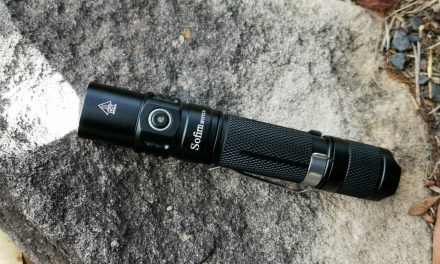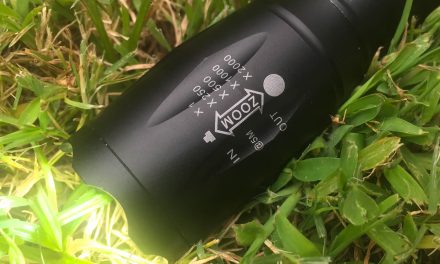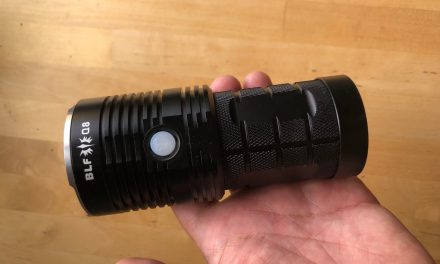
Flashlight Review: Klarus FX10

The XT range of flashlights from Klarus is popular with light painters and the consumer market. The FX10 is a zoom light, based on the non-zoom XT series lights features. Lets see how it performs.
Disclaimer
The Klarus FX10 was send to me for an honest review by FastTech. Product Link. Enter coupon code “MAP” in View Cart page for a better price.
Construction
The Klarus FX10 arrived in Klarus branded cardboard box. Included accessories include a micro USB cable, lanyard, spare O-ring, Klarus branded 2600mAh 18650 battery, nylon holster, and clip. My review sample came without batteries (due to shipping regulations), and thus the testing was performed with a Klarus 3600mAh 18650 battery.
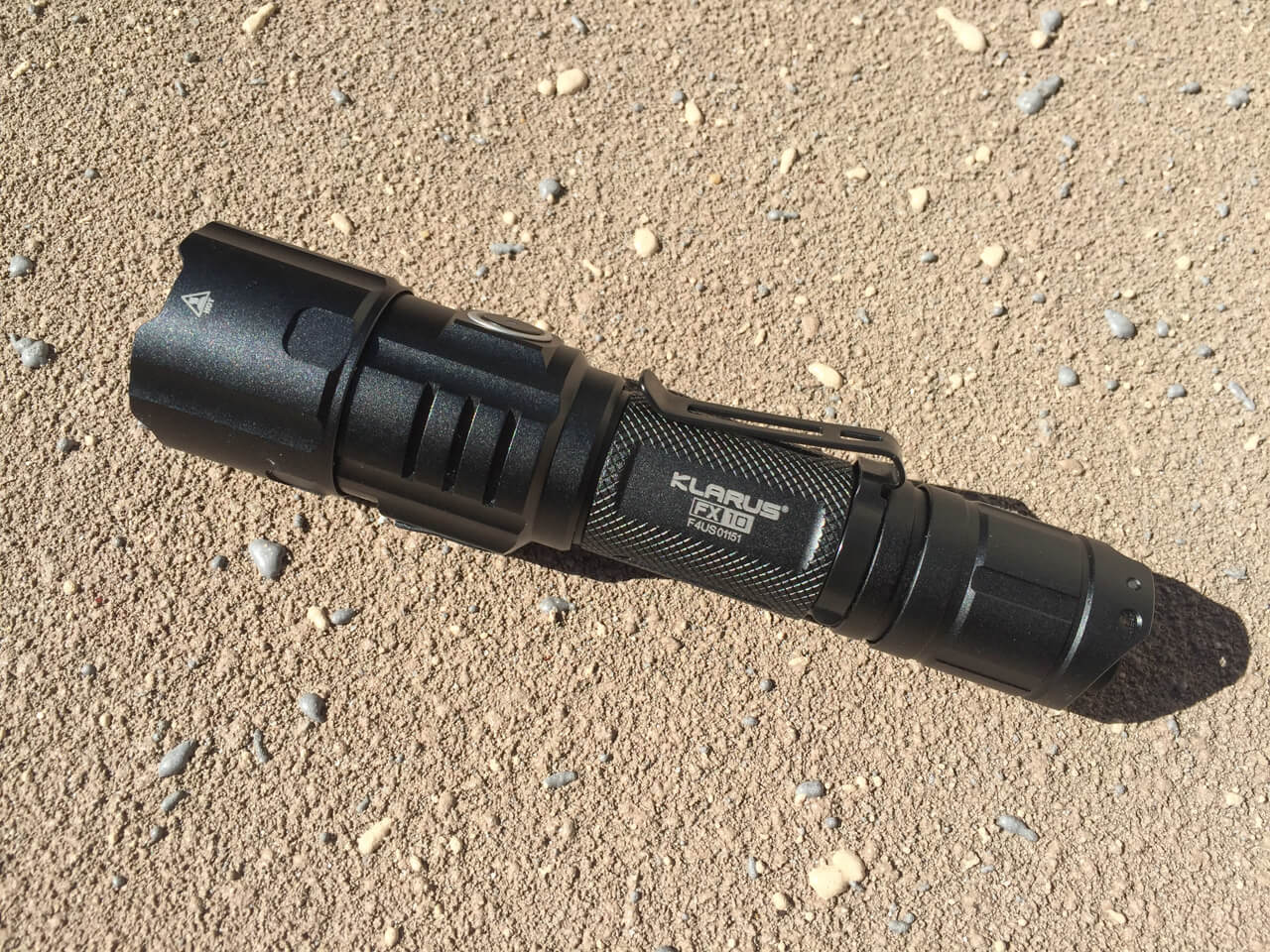
Klarus FX10 Flashlight
The Klarus FX10 has a very similar appearance to the XT11GT, with a head that is larger than the battery tube. The USB charging point (with a rubber plug) and side switch are located on opposite sides of the head, and the tail has a dual tail switch – primary switch and mode switch. More on the user interface later.
The Klarus FX10 is a zoom light, and thus the head can be moved to zoom the light (unlike the fixed head XT range). The zoom mechanism is moved by twisting the head. A quarter turn moves the zoom from flood to throw – this is much better than other twist to zoom lights I’ve used such as the Haikelite MT07 that require considerably more twisting. It is possible to hold the light and zoom the head with one hand, but not as easy with a push/pull zoom mechanism such as the Ledlenser P7.2. On the good side, it is difficult to accidentally zoom the light unless you are intending to.
With a head diameter of 35mm, the FX10 is compatible with Light Painting Brushes Universal Connector, Herramientas/Light Painting Paradise Cone, and Lumenman Connector. Unfortunately, despite it’s similarities with the Klarus XT series, it is not compatible with the Liteblades KYO.
The battery tube has springs at both ends, and is bored wide enough so both unprotected flat top, and protected button tops fit with no issues. Take note Nitecore! A 2600mAh battery was included, though this is rather low capacity for 2018 (I would expect 3400mAh). I tested the internal USB charger to terminate charge at 3.16V, which is at the lower end of acceptable. A crude battery charge indicator light (<30%, 30-70%, >70%) in the side switch can be useful so that you know when to recharge the battery.
The price of the Klarus FX10 is also reasonable. Due to distribution networks, zoom light manufacturers such as Coast, Ledlenser, and Walther Pro have highly variable prices depending on the country of sale (Australia being one of the worst). Thus, how the Klarus FX10 compares to it’s rivals in terms of price will vary on the country. Only Wowtac (A3S) offer a high quality 1000 lumen zoom light at significantly lower price.
User Interface
The Klarus XT11GT has two mode groups – Tactical Setting and Outdoor Setting. There are also three switches – the primary (button) and mode (paddle) switches at the tail, and a side switch. Due to the considerable options in the user interface, I won’t cover every possible user interface option, but will provide an overview of what can be done in each of these mode groups.
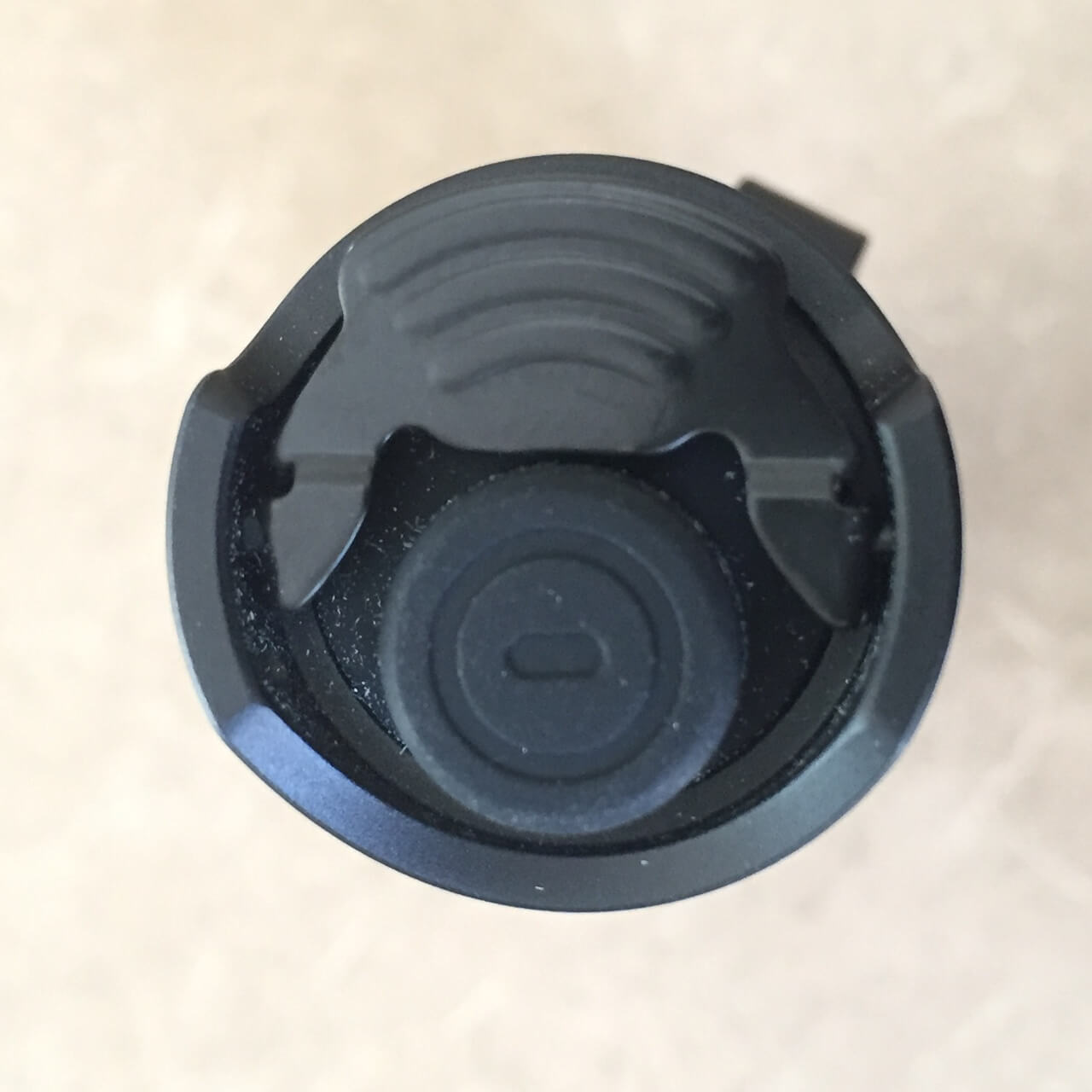
Klarus FX10 Dual Tail Switches
Tactical Setting (1) allows for momentary on turbo (primary switch), momentary on strobe (mode switch), direct access to low mode, single frequency strobe (if mode switch is kept depressed for >4secs secs), two frequency strobe (if mode switch is released after 4secs secs), ability to change modes (but no memory), and SOS mode.
Outdoor Setting (2) allows for momentary on turbo, momentary on low, ability change modes, mode memory (single click of side switch to turn on in memorised mode), strobe (double click of side switch), and SOS mode.
Unlike the XT11GT, there is no Advanced Tactical Setting (3) which allowed for only turbo and strobe modes, with momentary for both, and deactivated side switch. Thankfully, it is still possible to de-active the side switch by holding it down for 6 seconds, and 3 quick clicks to re-activate.
To move between modes, the user needs to hold down the side switch for 10 secs, and then use the mode switch to change between modes – the light flashes out the mode number.
The user interface is quite complex, and a read of the manual and a play is definitely required before using it for the first time! However, the user interface covers most requirements that a light painter requires. A major omission is lack of momentary functionality on medium and high modes – this is available on the Nitecore P10GT and MT22C, Thorfire TK15S, Thrunite TC12v2, and Wowtac A1S. This functionality would have made this light more useful for light drawing in various light conditions. It is also a little bit fiddly to exit single frequency strobe back to turbo on the fly (you need to hold, release, then click again). Due to the wide head and location of the side switch, the side switch is easily accessible when using the Light Painting Brushes Universal Connector, which is a bonus, and I assume that would be the same with other connectors.
The Klarus TRS1 remote tail switch (optional extra) allows for extra flexibility in control as it can be placed on the outside of light painting connectors. This is very useful for changing between modes on the fly during light painting scenes. The TRS1 can also be used on some other Klarus lights such as the XT11GT and XT2CR.
Beam and Runtime
The Klarus FX10 uses a Cree XP-L HI V3 LED. This LED is located below a TIR lens with no reflector. These optics look similar to many Ledlenser, Coast, and Walther Pro zoom lights. The advantage of using a TIR lens, compared to aspherical lenses found on cheaper zoom lights is that less light is lost within the head when at the zoom end.
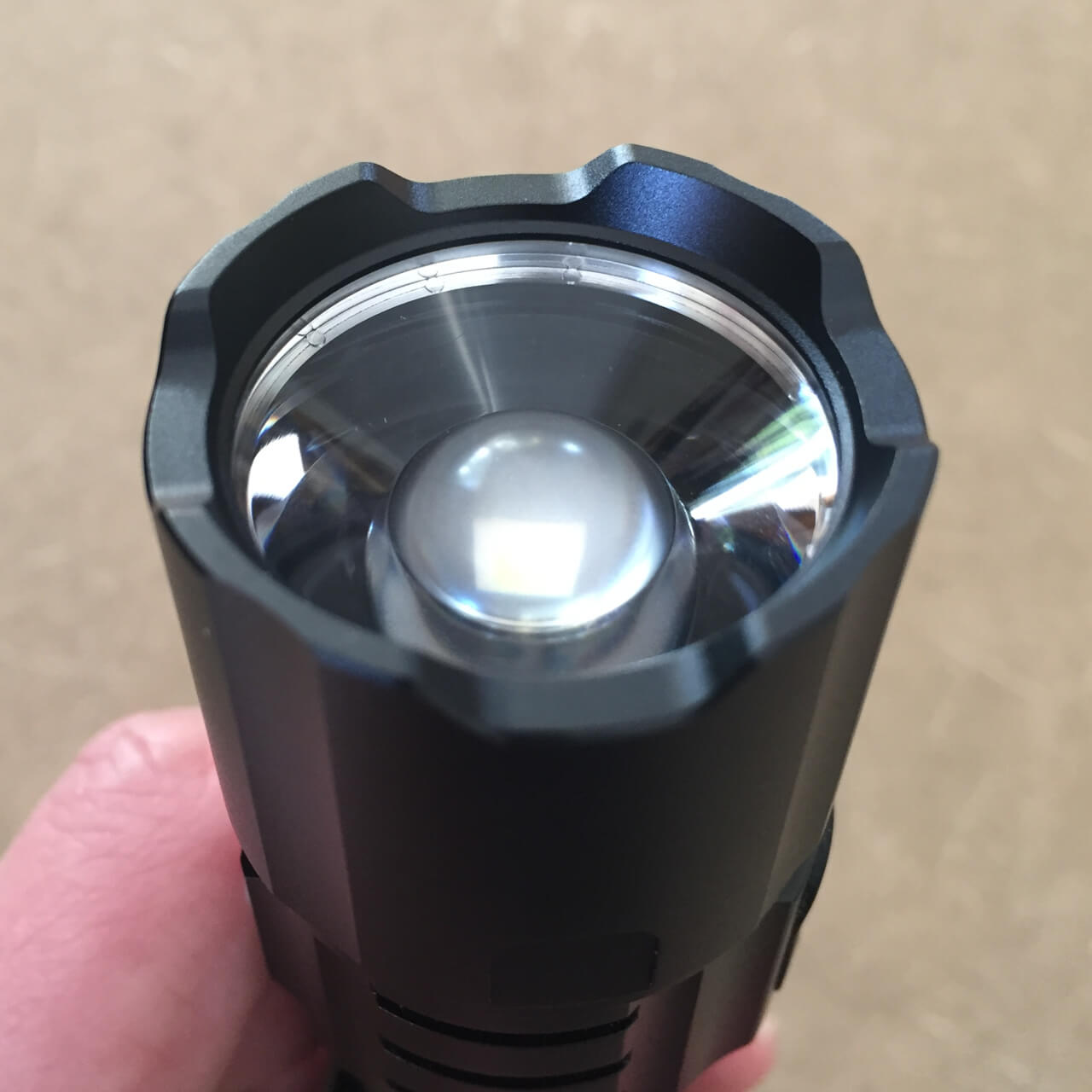
Klarus FX10 Lens
At the flood end, the beam is very wide and even, quite possibly the best flood beam I’ve seen on any zoom flashlight. At the zoom/throw end, there is a very intense hotspot at 22,500cd, but unusually for a zoom light, there is still quite a significant spill beam. There are advantages and disadvantages of still having a spill beam at the zoom end. Advantages are that it is better for illuminating light painting tools, and allows for some illumination of your next step when walking at night. The disadvantage is when using it for object illumination purposes, as you have a less defined beam. The zoom allows the Fx10 to be used with a wide range of light painting tools. I found the best illumination of light swords and lightflutes was slightly back from full zoom. The best illumination for light blades was about 3/4 the way towards the flood end. The best illumination for fibre optics was at the flood end.

Lightblading with the Klarus FX10 at full zoom (top) and full flood (bottom). f/8, ISO100. 100% output with blue gel.
The beam tint is cool white with a hint of yellow, more so nearer to the edge of the beam – Klarus always do a good job of selecting good LED tints. There is minimal tint shift at full zoom, and only a very narrow yellow corona at flood.
The output levels are turbo (1000 lumens), high (350 lumens), medium (100 lumens), and low (10 lumens). My testing was within 10% of these figures at 30 seconds. No moonlight mode is an omission. Strobe mode uses 1000 lumens. The Intelligent Temperature Protection System controls the output on turbo mode based on heat. It took 5 minutes until the light started stepping down output. This is much better than the 1000 lumen Ledlenser MT10, which steps-down after just 30 seconds. After 5 minutes, the FX10 then varies output between 65 to 85% based on the light’s temperature.
Colour rendering is in the usual low 70s, good enough for most purposes. Pulse Width Modulation (PWM) was not detected in any mode.
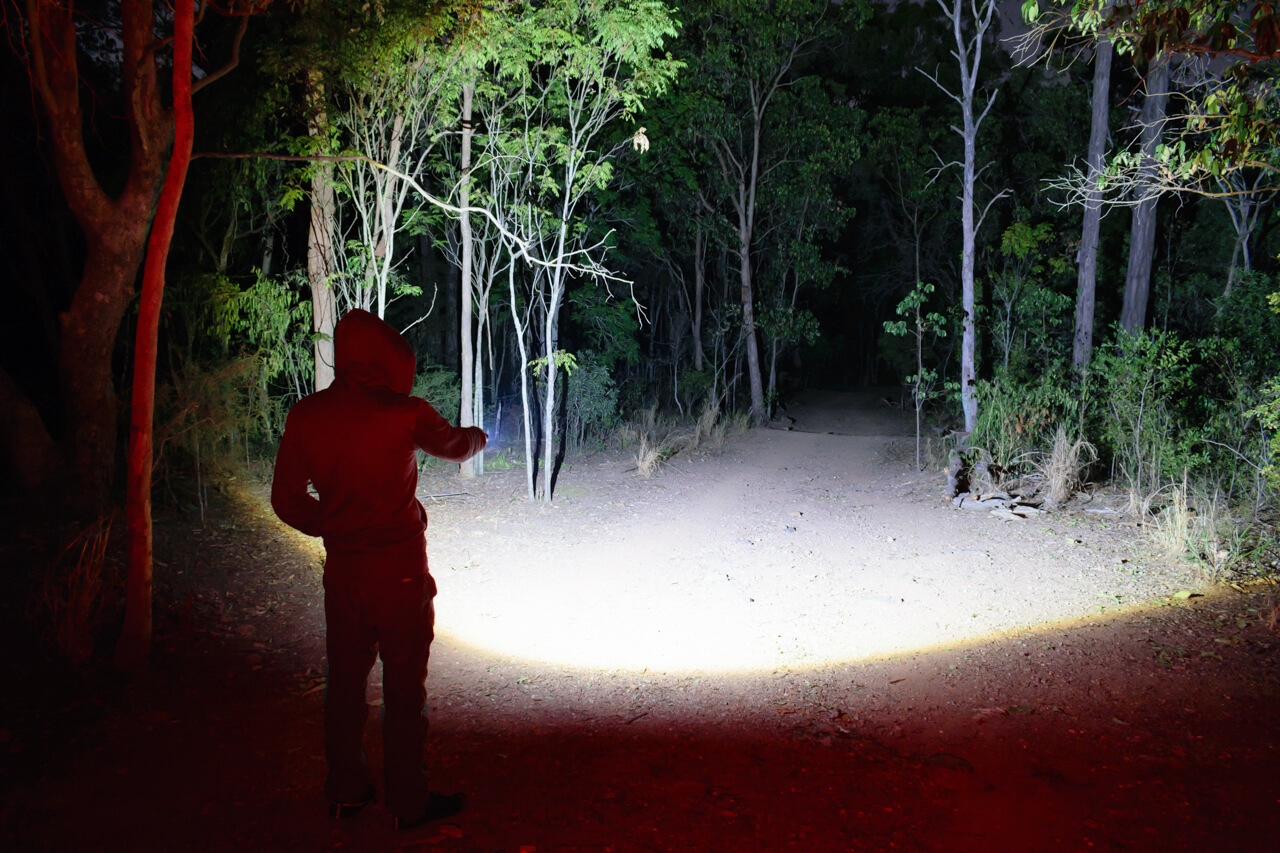
Beamshot at flood. f5.6, 3sec, ISO400.
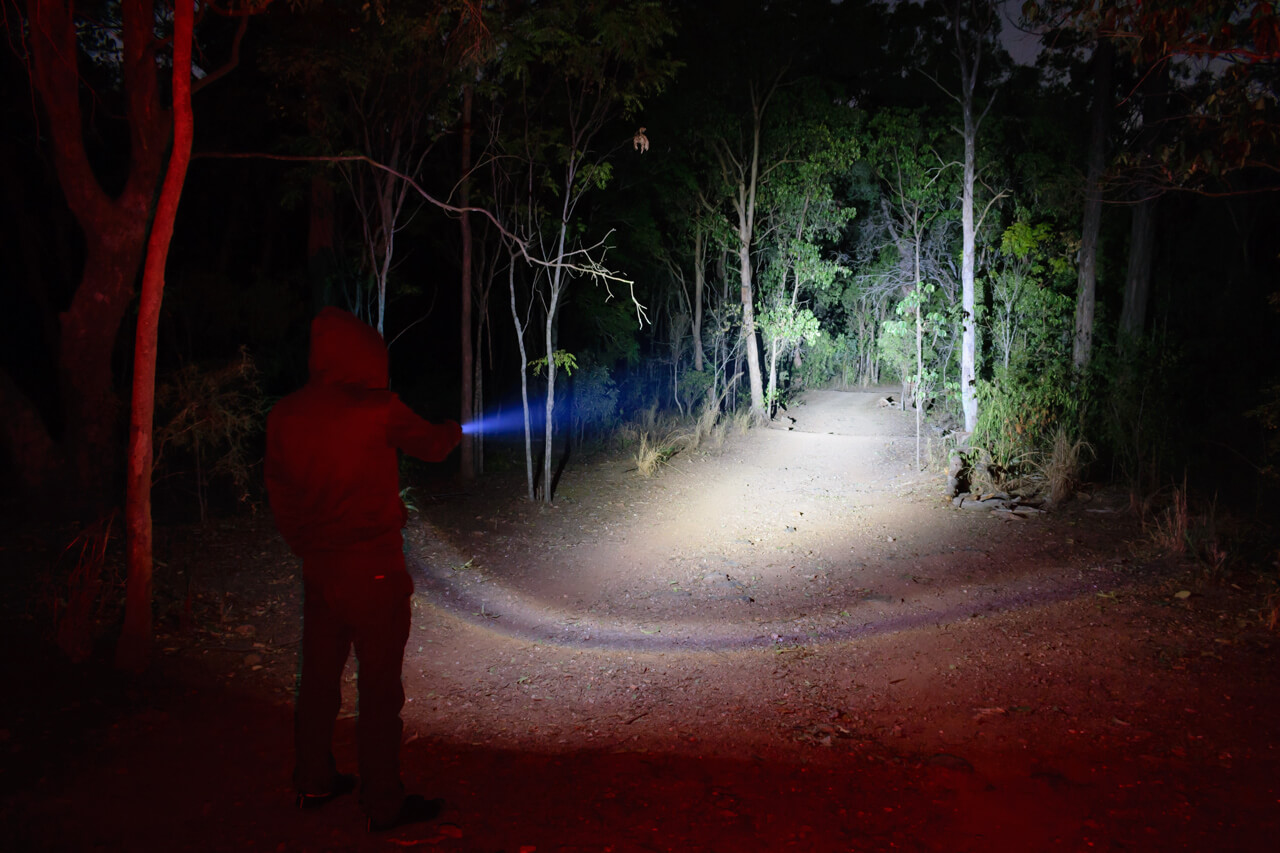
Beamshot at zoom. f5.6, 3sec, ISO400.
Conclusion
Things I liked:
- Quick to zoom
- Zoom head does not accidentally move
- Excellent heat handling compared to most zoom lights
- Good output and peak beam intensity
- Very wide and even flood beam
- Compatible with Light Painting Brushes Universal Connector, Herramientas/Light Painting Paradise Cone, and LumenMan Connector
- Suitable for a wide range of light painting tools
- Side switch can be de-activated, and can works with remote pressure switch
- Included quality (but low capacity) 18650 battery and internal USB charging
- Battery charge indicator
- Better value for money than most 1000 lumen zoom lights
Things I didn’t like:
- Significant spill beam at zoom/throw end
- No moonlight mode
- No “Advanced Tactical Mode” from the Klarus XT11GT
- No momentary functionality on high and medium modes
- Not compatible with Liteblades KYO system
- Fiddly to avoid two frequency strobe
The Klarus FX10 is a well built zoom light, which due to the zoom optics can be used with a wide range of light painting tools. It is not so good for finely controlled illumination. A good zoom mechanism, flexible user interface, and internal USB charging make this light an attractive option. This is the best zoom flashlight I’ve tested. However, due to lack of momentary functionality on all modes, and two frequency strobe, I am still looking for the “perfect” zoom flashlight.











